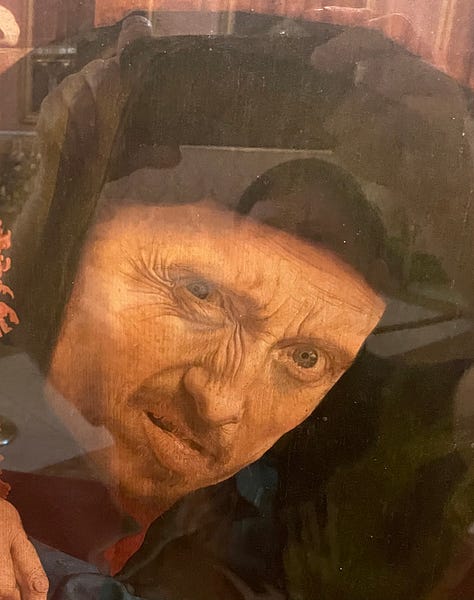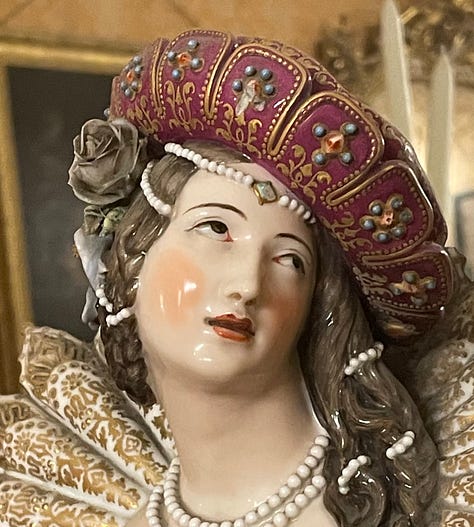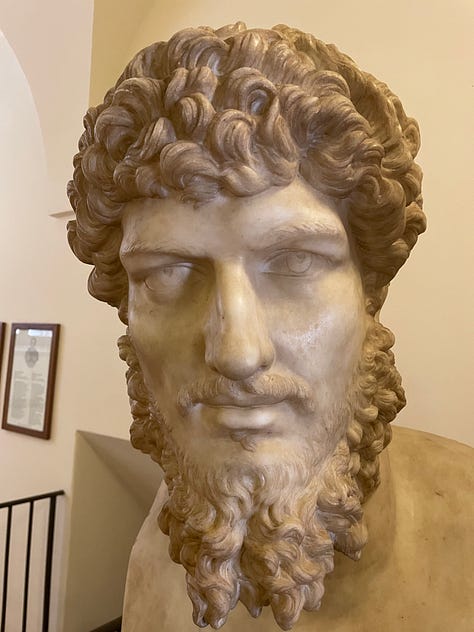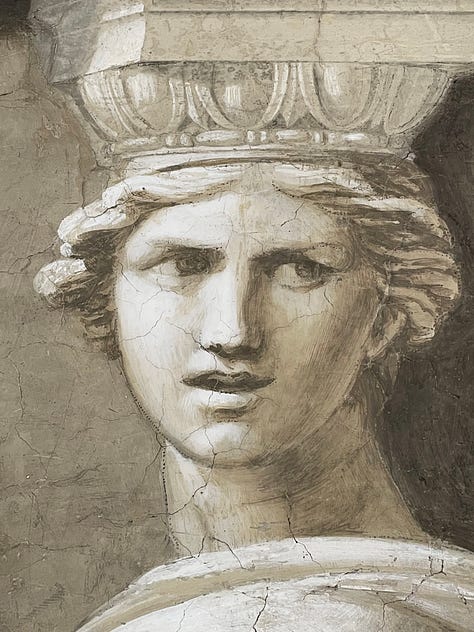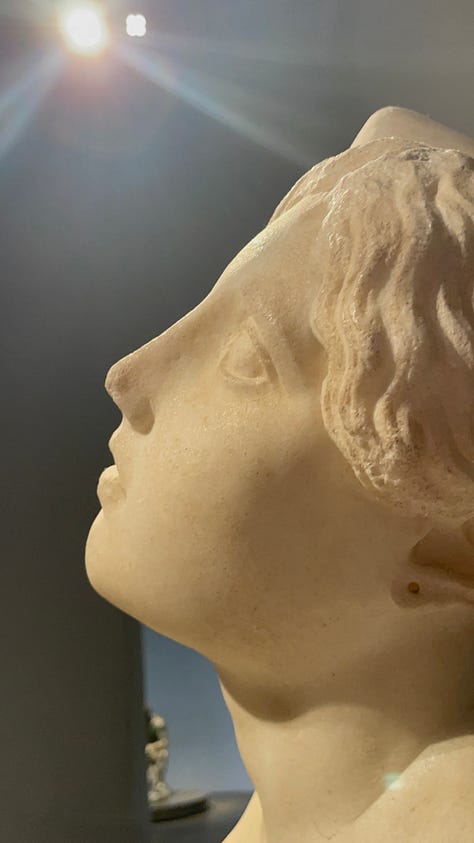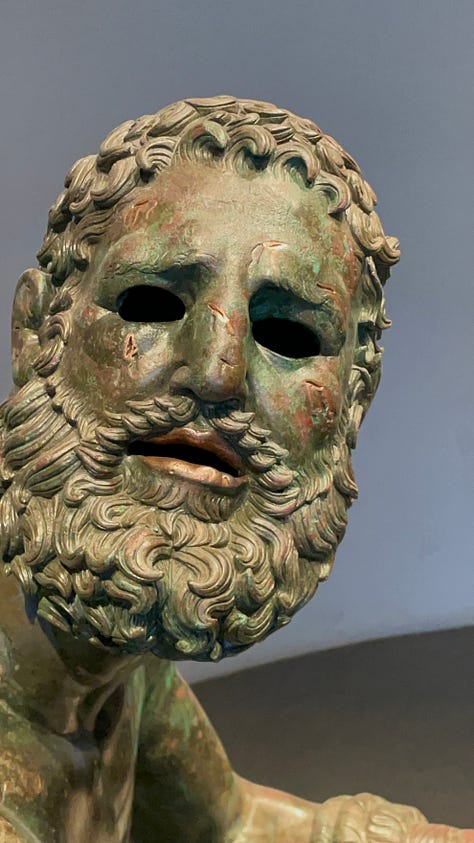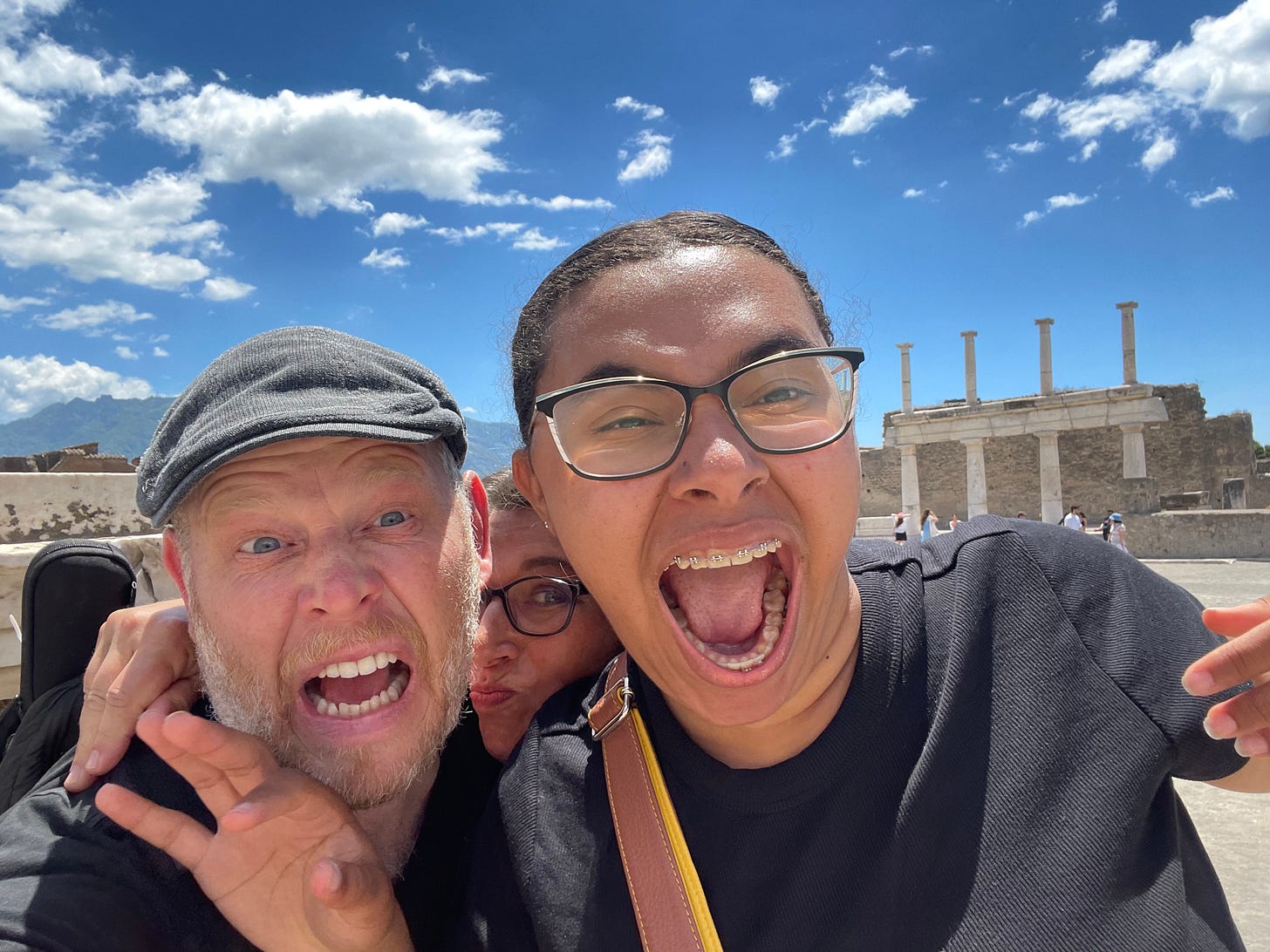Update on Rome, Pompeii, and Naples
Traveling-- it leaves you speechless, then turns you into a storyteller -- Ibn Battuta
Dennis, Mistin and Ciara in Pompeii
Successful travel means being able to adapt, figure things out, and adjust on the fly. All is foreign, there are unknowns. The adventurer understands this and goes anyway; it’s part of the game. There will be new sights, new experiences, new knowledge and best of all, new stories to tell—little gold nuggets covered in the dirt of uncertainty and danger. That little phrase, “If you can live to tell the tale,” feels so much more real when travelling. We conquered Rome on bicycles, weaving in and out of traffic, without helmets, pell-mell, just going for it. Mistin at my side, her red dress fluttering in all directions as she pedalled with fury — what a memory!
I understand that some of you may not have the time to read all of this, so I’ve created a couple of YouTube shorts for those who prefer to watch rather than read. — But if you scroll past and keep reading, you won’t be disappointed.
The cock crows and churchbells ring. We are now in Pompeii. Our little Villa sits under the shadow of Mount Vesuvius’s blown top. Today we climb the monster that vaporized so many nearly 2,000 years ago. Their horror and tragedy have allowed us to get an intimate look at what life was like back then. We have a near-perfect snapshot preserved under six meters of piroclastic flow and ash. We can see ancient graffiti, campaign slogans, and fast food options! Their loss has been our gain. What a sobering thought, but also what a perfectly human one.
The ancientness of Italy is overwhelming. Archaeologists can’t keep up with the volume, so marble slabs, broken pillars and parts of statues litter Rome and Naples. Collections beyond number fill museum after museum. I walk through the subterranean train station in Rome, and there, cutting a line through the local McDonald's, is the Servian wall. While little Italian kids talk loudly and munch on their Big Macs, I’m looking at the massive work project that the sixth king of Rome built almost 500 years before Jesus showed up! Before the Roman Republic, before the Empire, slaves and masons bloodied their knuckles stacking up volcanic rocks to keep out whatever “bad guys” were trying to infiltrate the seven hills of Rome. As I walk through all these grand places of antiquity, I’m struck with several observations:
The rawness of ancient life
The sameness of human life
If you can write and work with stone, you can live forever.
The Rawness of Ancient Life
Life was short, often brutal, and lived on the edge. There were not as many moral concerns either, or at least not the ones that trouble us today. Nudity was normal. Whether at the public baths or competing in athletic events, buck naked was the preferred option. People viewing your “naughty bits” wasn’t an issue. Also, the spectre of death was a constant companion in ancient days. For a few Denarri, you could stroll over to the local collesseum in Pompeii, and as a family watch people bludgeon themselves to death. If Dad decided that the birth of a daughter was not part of the family’s business plan, then out with the trash she went. Men had sexual relations with wives, concubines, mistresses, slaves and young boys. No one thought anything of it.
The Sameness of Human Life
And yet we are the same. Look at the expressions below. When I look into the faces of those long gone. I see the same humanity. The same emotions. Fear, love, hope, anxiety, boredom, frustration, Imagination, terror, annoyance. It’s all there. We are different, yes, but we are so very much the same. Linking with the past in this way somehow helps me feel more alive, more human. It’s a profoundly healthy experience to grab hold of ancient roots every once in a while.
Next week, Tropea and Sicily!


